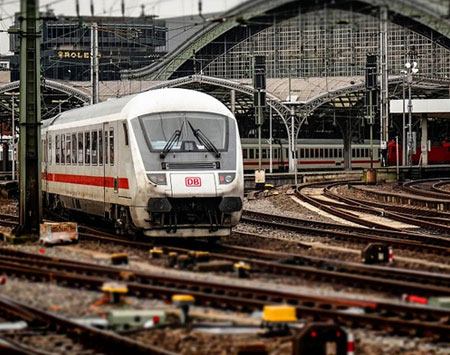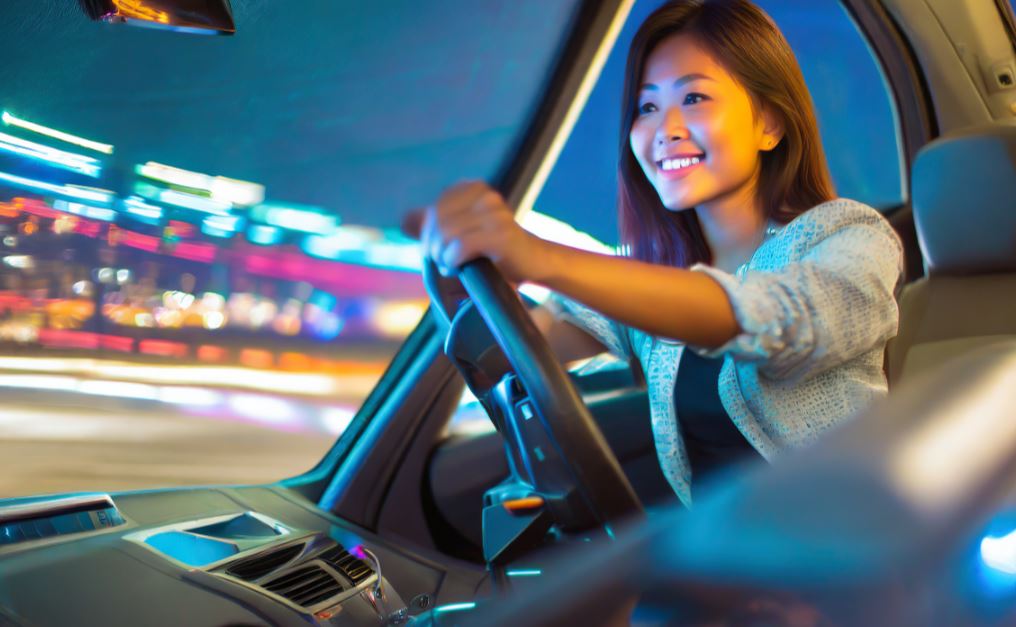Stay on Track: Essential Rail Safety Guidelines
Practice rail safety with these crucial tips. Stay behind safety barriers, never cross tracks recklessly, and use designated crossings. Be aware of approaching trains, follow platform rules, and avoid distractions near tracks. Educate others on the importance of rail safety for a secure commuting experience.
Stay Behind the Yellow Line:
When waiting for a train, always stand behind the yellow line on the platform. This ensures a safe distance from the tracks and moving trains.
- Always stand behind the yellow line when waiting for a train.
- Maintain a safe distance from the tracks and moving trains.
- Follow platform markings and announcements for your safety.
Observe Warning Signals:
Pay attention to warning signals, bells, and lights at railway crossings. Stop and wait for the train to pass before crossing the tracks.
- Pay attention to warning signals, bells, and lights at railway crossings.
- Stop and wait for the train to pass before crossing the tracks.
- Do not attempt to cross if the barriers are down or warning signals are active.
Stay Clear of Moving Trains:
Maintain a safe distance from moving trains. Do not attempt to cross the tracks while a train is in motion, and avoid walking along the tracks.
- Maintain a safe distance from moving trains.
- Do not attempt to cross the tracks while a train is in motion.
- Avoid walking along the tracks for your safety.
Use Designated Crossings:
Cross railway tracks only at designated pedestrian crossings. Follow proper procedures, look both ways, and ensure no trains are approaching.
- Cross railway tracks only at designated pedestrian crossings.
- Follow proper procedures, look both ways, and ensure no trains are approaching before crossing.
- Obey crossing signs and signals for your safety.
Stay Off Stationary Trains:
Avoid climbing on or off stationary trains. Use designated platforms and entrances to board and exit trains safely.
- Avoid climbing on or off stationary trains.
- Use designated platforms and entrances to board and exit trains safely.
- Wait for the train to come to a complete stop before attempting to board or alight.
Report Suspicious Activity:
If you notice any suspicious activity or objects around railway facilities, report it to authorities immediately. Your vigilance contributes to rail safety.
- If you notice any suspicious activity or objects around railway facilities, report it to authorities immediately.
- Be aware of your surroundings and report any concerns for the safety of all passengers.
- Follow any security protocols and guidelines provided by railway authorities.
Stay Informed About Train Schedules:
Familiarize yourself with train schedules to avoid rushing and ensure you have enough time to board or exit the train safely.
- Familiarize yourself with train schedules to avoid rushing.
- Ensure you have enough time to board or exit the train safely.
- Plan your journey and connections to minimize stress and potential safety risks.
Keep Emergency Exits Clear:
Do not obstruct emergency exits on trains and platforms. Clear exits ensure a quick and safe evacuation in case of an emergency.
- Do not obstruct emergency exits on trains and platforms.
- Clear exits ensure a quick and safe evacuation in case of an emergency.
- Follow any instructions provided by train staff during emergency situations.
Train safety tips: Now days many of the bus/car drivers do not pay their attention on the highway-rail crossings where they drive across day after day because they never see a train there. They don’t appreciate that freight trains do not run on right schedules and can be anywhere at any time going in any track! Here we are suggesting you some safety tips for the train.
- Trains can’t change the direction instantly!
When steam engine engineers see a vehicle or a person on the rail way in the path of their train, they can’t turn sharply out of the rail way. The train do not have steering wheel! It simply follows the tracks of rail way. See more Train safety tips
- The trains can’t stop promptly!
Do you know that the standard train consisting of 100 cars and weighing anywhere from 15 million to 20 million pounds takes over a mile to stop in emergency braking? That is the length of at least 20 football fields travelled before coming to a total stop. Why this long distance to stop? There are brake shoes on every wheel, but it takes that long for all of those brakes to overcome the impetus of the great weight pushing the train. Always give up the right of way to the train since the engineer cannot give way to you. So be careful. Train safety tips
- Don’t Ignore the Warnings!
Some crosses are ready with mechanical warning devices such as blinking lights and bells and gates that make active when a train is forthcoming. These are on the go warning devices. Many other trips only have reflexive warning signs to alert you of a possible hazard in front.
- Be careful about the optical illusion of the rail way!
- Don’t drive your car into the trains on the rail way crossing!
- Watch for the second train whether it would arrive while crossing the rail way!
- Dead wrong!
Some people treat the rail way area as a public place for their amusement which is a very bad idea because of accident.
- Use caution on bridges and tunnels!
Railway tunnels create similar risk to railway bridges. Most of the times there’s no sidewalk and you can’t move fast on it. Therefore you need to be careful with this regards.
[bws_related_posts]
Train safety tips
Train travel safety tips:
1. STAY ALERT.
2. WATCH THE OVERHANG.
3. STAND AWAY FROM THE PLATFORM EDGE.
4. WHEN ON BOARD, HOLD ON.
5. WATCH YOUR STEP.
6. DON’T TAKE SHORTCUTS WITH YOUR LIFE! ref
Follow directional signs and markings that let you know where it is safe to cross the tracks. Crossing the tracks anywhere else is dangerous and illegal.
Railroad Crossing Tips for Equestrians :
Operation Lifesaver, Inc. (OLI) and USRider Equestrian Motor Plan remind equestrians and drivers of vehicles pulling horse trailers to be especially cautious around railroad tracks and trains. INFORMATION FOR TOWING HORSE TRAILERS: Recent research into 200 horse trailers incidents showed an inordinate number involving gooseneck horse trailers becoming stuck on railroad crossings. Nearly all of these incidents resulted in loss of human and ….Railroad Crossing Tips for Equestrians see details pdf:
Rail Safety for ATV Riders or What to do if Your Vehicle Stalls or Hangs Up on the Tracks
This sign tells you trains run at this location. Cross tracks at the crossbuck sign only. Itis illegal to cross between crossings. If the lights are flashing and gates are lowering, a train is approaching. Do not proceed until the gates go – Rail Safety for ATV Riders http://oli.org/images/page/OL-ATVVisorCd10F.pdf
All safety tips
| Tips for Safe Travel |
|








